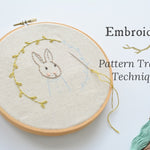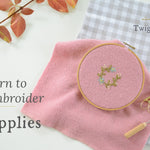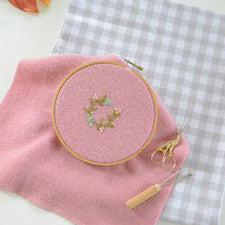Modifying a well-drafted pattern to suit your preferences is one of the great joys of sewing. If you prefer skirts to have lots of extra volume and twirl, then this is the tutorial for you! Here, we describe two simple methods for adding extra fullness to a gathered skirt. Use this pattern modification with the Wildflower Pinafore, Fable Dress, Meadow Skirt, or any garment with a gathered skirt.

Materials
- Front & Back Skirt pattern pieces
- Ruler
- French Curve (optional - for method 2)
- Large sheet of paper
- Pen/pencil
- Tape
- Scissors
Decide which method you would like to use:
Method 1: Add width to the skirt at the side seams. A very simple pattern adjustment that involves making the rectangular skirt piece wider. This method will add more width to the entire skirt, from waist to hem, and will result in more gathered fabric at the waist seam. In some cases this will work fine, but if adding a lot of extra width or using a thicker fabric, it may result in too much bulk in the gathers. This method is best suited for small to moderate width adjustments using light to mid-weight fabrics.
Method 2: Create a flared skirt, adding most of the extra width at the hem (also known as "slash and spread"). This pattern adjustment is more involved, but not difficult. The width of the pattern piece will remain the same at the waist, but will angle out towards the hem, creating a flared skirt. This method works for a range of fabric weights, and can be used to make dramatic skirt adjustments, creating a fuller, swishier skirt shape without adding bulk at the waist.
Adjust pattern pieces
Method 1 - Adding to the sideseam:
Decide how much extra volume you would like to add to the skirt.
Be sure to check the width of the fabric to ensure that the adjusted pattern piece will still fit. If the pattern piece is too wide, it may be possible to turn it 90 degrees and cut on the cross-grain (in the opposite direction), but this depends on print direction, fabric pile, and stretch. Tape paper to the side of the skirt pattern piece to add the desired amount to the skirt. Add the same amount to the top to bottom to maintain the rectangular shape of the pattern piece.

If you plan to sew patch pockets to the skirt, adjust the pocket placement markers by moving them over by half the amount added to the skirt.
When sewing the adjusted skirt to the bodice or waistband pieces, simply gather the fabric more to fit. If the garment has an elastic back waistband, do not alter the size of the waistband. Instead, gather the skirt to the size of the waistband to avoid adding extra bulk.
Method 2 - Create a flared skirt:
Lay out a large sheet of paper. Mark half the width of your fabric on the backing paper so that you can see how far you can pivot the pattern pieces when adjusting.
As above, be sure to check the width of your fabric to ensure the pattern piece will still fit. Depending on print direction, fabric pile, and stretch, it may be possible to turn the pattern piece 90 degrees to get some extra width.
Divide the width of the skirt pattern piece into thirds or quarters, and draw vertical lines from the hem to the upper waist edge. Cut along these lines from the hem, leaving a small "hinge" of paper intact at the waist edge to use as a pivot point.

Lay the skirt pattern piece onto a large sheet of paper and secure it in place along the centre front of the skirt. Starting with the cut closest to the centre front, pivot each section out by an equal amount until the desired amount of fullness has been added to the skirt. Tape the pieces in place.

Draw a new, smooth curve for the waist edge and hem (a French curve can help with this step). Cut the pieces and sew the garment as described in the pattern tutorial.
Note that this method will result in a curved hem, which can be trickier to press and sew. For a wide curved hem, you may want to sew a line of basting stitches along the top of the hem fold and gather it slightly to ease the curved hem, or create a facing for the hem.
If adding patch pockets to the adjusted skirt pattern piece, the pocket position markers may have to be slightly adjusted. Centre the pocket over the original, sliced-up pocket placement marker, and re-mark the end points.
Here's a video that demonstrates the pattern adjustment in action:
That's it - two simple ways to create an extra-full skirt with plenty of twirl and swish.


Read more Twig + Tale sewing tutorials here:




